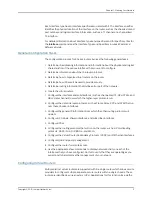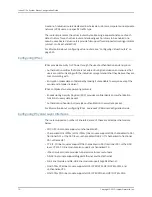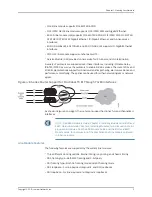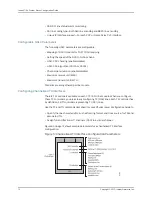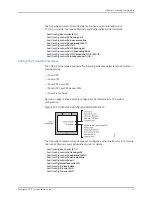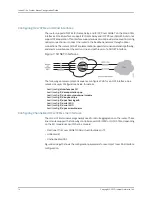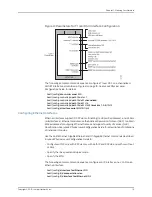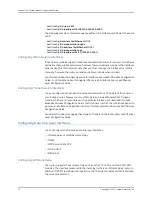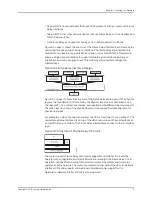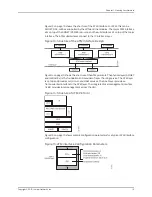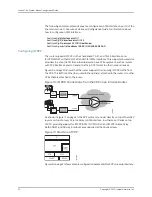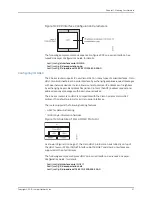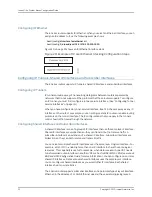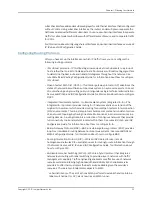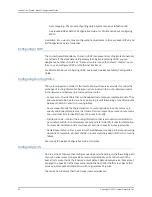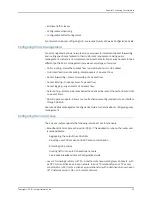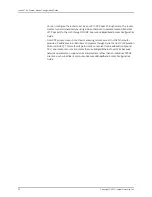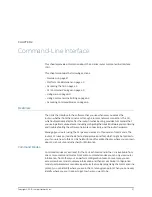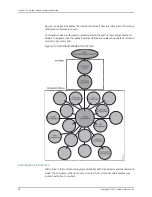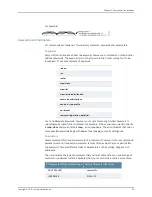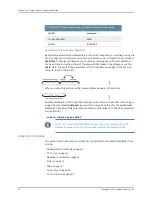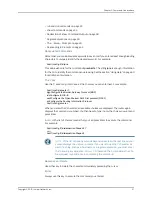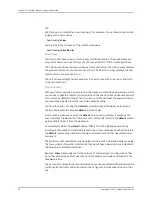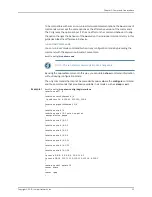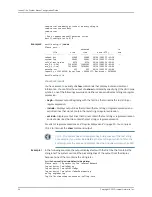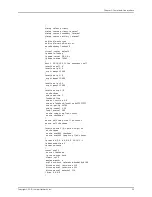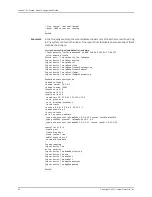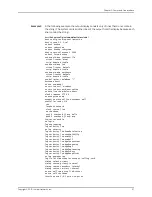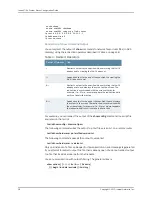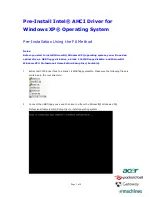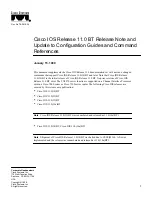
subscriber interface adds a demultiplexing layer for an Ethernet interface that is configured
without VLANs. Using subscriber interfaces, the router can demultiplex or separate the
traffic associated with different subscribers. You can use subscriber interfaces to separate
traffic for cable modem subscribers with different levels of service and to separate traffic
for VPNs.
For information about configuring shared interfaces and subscriber interfaces, see
JunosE
IP, IPv6, and IGP Configuration Guide
.
Configuring Routing Protocols
After you have set up the interfaces on which IP traffic flows, you can configure the
following routing protocols:
•
IP multicast protocols—IP multicasting allows a device to send packets to a group of
hosts, rather than to a list of individual hosts. Routers use multicast routing algorithms
to determine the best route and transmit datagrams throughout the network. See
JunosE Multicast Routing Configuration Guide
, for information about how to configure
IP multicast.
•
Open Shortest Path First (OSPF)—This interior gateway protocol (IGP) advertises the
states of network links within an autonomous system. An autonomous system is a set
of routers having a single routing policy running under a single technical administration.
See
JunosE IP, IPv6, and IGP Configuration Guide ,
for information about how to configure
OSPF.
•
Integrated Intermediate System–to–Intermediate System (integrated IS-IS)—The
integrated IS-IS protocol provides routing for IP networks and is an extension of the
original IS-IS protocol, which provides routing for pure Open Systems Interconnection
(OSI) environments. This link-state protocol builds a complete and consistent picture
of a network’s topology by sharing link-state information across network devices in a
routing domain. A routing domain is a collection of contiguous networks that provide
full connectivity to all end systems located within them. See
JunosE IP, IPv6, and IGP
Configuration Guide ,
for information about how to configure IS-IS.
•
Border Gateway Protocol (BGP)—BGP, an external gateway protocol (EGP), provides
loop-free interdomain routing between autonomous systems. See
JunosE BGP and
MPLS Configuration Guide ,
for information about how to configure BGP.
•
Routing Information Protocol (RIP)—RIP is an IGP created for use in small,
homogeneous networks. RIP uses distance-vector routing to route information through
IP networks. See
JunosE IP, IPv6, and IGP Configuration Guide ,
for information about
how to configure RIP.
•
Multiprotocol Label Switching (MPLS)—MPLS is a hybrid protocol that integrates
network layer routing with label switching to provide a layer 3 network with traffic
management capability. Traffic engineering enables more effective use of network
resources while maintaining high bandwidth and stability. MPLS enables service
providers to offer their customers the best service available given the provider’s
resources. There are two fundamental aspects to MPLS:
•
Label distribution—The set of actions MPLS performs to establish and maintain a
label-switched path (LSP), also known as an MPLS tunnel.
23
Copyright © 2010, Juniper Networks, Inc.
Chapter 1: Planning Your Network
Summary of Contents for JUNOSE 11.3
Page 6: ...Copyright 2010 Juniper Networks Inc vi...
Page 8: ...Copyright 2010 Juniper Networks Inc viii JunosE 11 3 x System Basics Configuration Guide...
Page 24: ...Copyright 2010 Juniper Networks Inc xxiv JunosE 11 3 x System Basics Configuration Guide...
Page 32: ...Copyright 2010 Juniper Networks Inc 2 JunosE 11 3 x System Basics Configuration Guide...
Page 146: ...Copyright 2010 Juniper Networks Inc 116 JunosE 11 3 x System Basics Configuration Guide...
Page 166: ...Copyright 2010 Juniper Networks Inc 136 JunosE 11 3 x System Basics Configuration Guide...
Page 432: ...Copyright 2010 Juniper Networks Inc 402 JunosE 11 3 x System Basics Configuration Guide...
Page 488: ...Copyright 2010 Juniper Networks Inc 458 JunosE 11 3 x System Basics Configuration Guide...
Page 524: ...Copyright 2010 Juniper Networks Inc 494 JunosE 11 3 x System Basics Configuration Guide...
Page 554: ...Copyright 2010 Juniper Networks Inc 524 JunosE 11 3 x System Basics Configuration Guide...
Page 566: ...Copyright 2010 Juniper Networks Inc 536 JunosE 11 3 x System Basics Configuration Guide...
Page 588: ...Copyright 2010 Juniper Networks Inc 558 JunosE 11 3 x System Basics Configuration Guide...
Page 613: ...PART 3 Index Index on page 585 583 Copyright 2010 Juniper Networks Inc...
Page 614: ...Copyright 2010 Juniper Networks Inc 584 JunosE 11 3 x System Basics Configuration Guide...
Page 632: ...Copyright 2010 Juniper Networks Inc 602 JunosE 11 3 x System Basics Configuration Guide...

